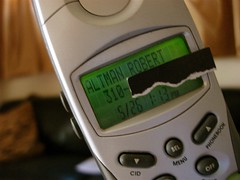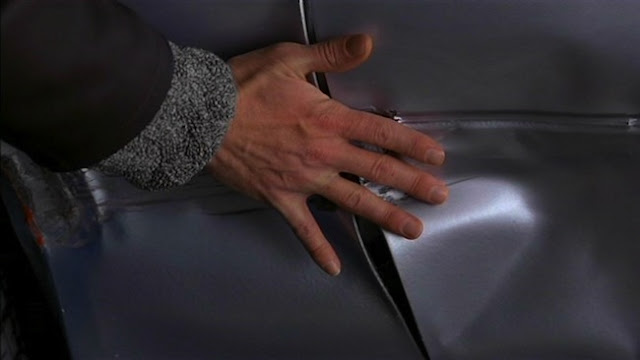One long movie: on Altman, Wenders, Tarr and duration
"I'VE BEEN MAKING ONE LONG MOVIE" is one of the nice lines Robert Altman had in his quiver to keep from telling journalistic outsiders about just what it was that he did as a filmmaker.
Altman worked variations on the form of the musical, sometimes hiding it, sometimes celebrating it. He claimed to hate genre, which is why he employed it and also why he would worm his way through the clichés of a given genre in movies like The Long Goodbye (the always-moral figure of the P.I. turns amoral; a blowzy 1940s-style theme is repeated ad infinitum down to supermarket Muzak and doorbells), or McCabe & Mrs. Miller (the maverick Western entrepreneur is demonstrated as a mumbling mess-up, scored to dour, fateful songs by Leonard Cohen like "Susannah"). Nashville, of course, was one of the outright musicals, but one also where maudlin impulses are shown to anticipate maudlin sentiments in second-rate songs. But there is also the eccentric Popeye, scored by Van Dyke Parks and Harry Nilsson and the underrated Kansas City, about the jazz of the era in which Altman grew up in that small Midwestern city.
He had a film in pre-production, scheduled to shoot in February. (It was a fictional version of the documentary Hands on a Hardbody.) At the age of 81, insurers required a back-up director, which Paul Thomas Anderson served as on what turned out to be Altman's final musical and final picture, A Prairie Home Companion. (Anderson, of course, starts loud and music only gets LOUDER; a dialectical effect in Altman's work becomes a dial-it-up effect in Anderson's.) Like Andrei Tarkovsky while making The Sacrifice, Altman knew he had the cancer that would kill him last Monday while he was making and publicizing Prairie Home Companion, a meditation on the passing of form and tradition and of mortality that includes the line, "An old man's death is never a tragedy."
Tragedy is in smaller gestures, and the densely organized yet gesturally rich Satantango, Bela Tarr's seven-and-a-half hour 1994 Hungarian epic has been scheduled for ages for American release, and has been pushed back again. While Tarr's schema for that picture is, as the title indicates, built in an intricate fashion around the form of the tango, other movies, such as his Werckmeister Harmonies (on Facets Video), elongate ideas of time and representation through duration, and camera movement, and music. Werckmeister opens with an extended traveling shot, an incredibly orchestrated dance of figures and camera, in a small-town hard-drinking old man's bar, that while influenced by Tarr's Hungarian predecessors like Miklos Jansco, attempts to describe the creation of the world through the dance of the camera. Altman's slow, steady zoom-in/slow, steady zoom-out alternation is formally different, yet draws on parallel inspiration.
How can the tempo of experience be expressed in the tempo of film? Each director finds their own way, but it seems wrong to resist the pull of music, which, like other forms of sound, works directly in the mind rather than requiring interpretation the way images do. Thanksgiving weekend, I wound up seeing Wim Wenders' director's cut of his 1991 Until the End of the World—four hours and thirty-eight minutes, without an intermission, thank you-along with an appearance by Wenders afterwards. Wenders, at 63, with long, shaggy gray hair, eyes framed by bold round specs, looking more and more like a lost Ramone, spent ten patient days at a complete retrospective at the Thessaloniki International Film Festival in Greece, answering questions from very young audiences that can only be described as "thronging" and "worshipful." The director's cut of Until is daffy and logy, and best experienced, like its many characters jumping around the globe, with a tad of jet lag. A friend who was supposed to see the film with me arrived in time for the Q&A. "Do you feel more like a complete and finished person now?"
In it complete and finished form-actually a cut that Wenders and editor Przygodda had set to one side before "massacring" it to two-and-a-half hours demanded Warners and other distributors, delivering only a lesser quality drawn-from-positive diversion-wouldn't you guess, Until is a musical, a science fiction road movie trilogy of stories about an ecological disaster. (It won't be released in the U.S.; Wenders says Warners won't pay their share of the substantial costs of making the cut.) The characters converge in the Australian outback, all in search of a machine that will allow the world to see its dreams. The tempo slows. The metaphors tumble out. But in the extended cut, Wenders and his collaborators allow the characters to each discover a musical instrument, from drums to didgeridoo, not only expressive of their personalities, but also a convergence of sounds, hopes, dreams that lead to several loopy, percussive jam sessions.
Same for Altman's swan song. A Prairie Home Companion is as blunt as a stick or a rap to the knuckles about its harmonizing: the characters are performing one final show in a form that has been an anachronism for decades, watched over by a detective who's fallen head first out a bad film noir pastiche and a blonde angel of death, embodied by Virginia Madsen. Songs are sung. Stories are told. Time glides past painlessly. An old man's death is never a tragedy, but it is a story, a reverie, the end of one long movie, and also a song.
[Wenders' official website is www.wim-wenders.com; Until the End of the World's director's cut can be ordered here; published in a different version in Newcity, 30 November 2006.]

